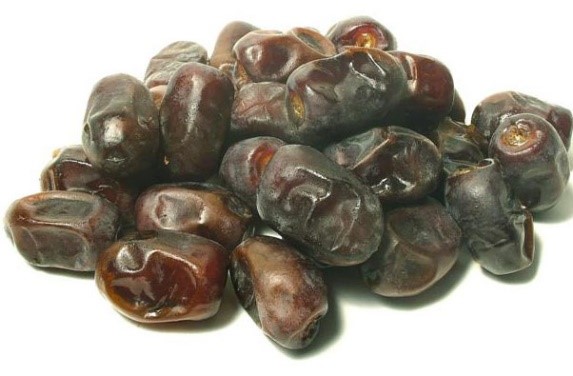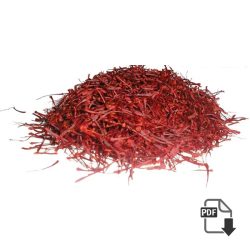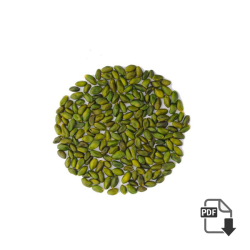All About Peanut
The peanut, also known as the groundnut, goober (US), or monkey nut (UK), and taxonomically classified as Arachis hypogaea, is a legume crop grown mainly for its edible seeds. It is widely grown in the tropics and subtropics, being important to both small and large commercial producers. It is classified as both a grain legume and, due to its high oil content, an oil crop. World annual production of shelled peanuts was 44 million tonnes in 2016, led by China with 38% of the world total. Atypically among legume crop plants, peanut pods develop underground (geocarpy) rather than above ground. With this characteristic in mind, the botanist Linnaeus named the species hypogaea, which means “under the earth”.
As a legume, the peanut belongs to the botanical family Fabaceae; this is also known as Leguminosae, and is commonly known as the bean, or pea, family.[1] Like most other legumes, peanuts harbor symbiotic nitrogen-fixing bacteria in root nodules. This capacity to fix nitrogen means peanuts require less nitrogen-containing fertilizer and also improve soil fertility, making them valuable in crop rotations.
Peanuts are similar in taste and nutritional profile to tree nuts such as walnuts and almonds, and as a culinary nut are often served in similar ways in Western cuisines. The botanical definition of a “nut” is a fruit whose ovary wall becomes hard at maturity. Using this criterion, the peanut is not a typical nut. However, for culinary purposes and in common English language usage, peanuts are usually referred to as nuts.
Please for more information or any inquiry click here ……
History:
Cultivated peanuts (A. hypogaea) arose from a hybrid between two wild species of peanut, thought to be A. duranensis and A. ipaensis. The initial hybrid would have been sterile, but spontaneous chromosome doubling restored its fertility, forming what is termed an amphidiploid or allotetraploid. Genetic analysis suggests the hybridization may have occurred only once and gave rise to A. monticola, a wild form of peanut that occurs in a few limited locations in northwestern Argentina, or in southeastern Bolivia, where the peanut landraces with the most wild-like features are grown today. and by artificial selection to A. hypogaea.
The process of domestication through artificial selection made A. hypogaea dramatically different from its wild relatives. The domesticated plants are bushier and more compact, and have a different pod structure and larger seeds. From this primary center of origin, cultivation spread and formed secondary and tertiary centers of diversity in Peru, Ecuador, Brazil, Paraguay, and Uruguay. Over time, thousands of peanut landraces evolved; these are classified into six botanical varieties and two subspecies (as listed in the peanut scientific classification table). Subspecies A. h. fastigiata types are more upright in their growth habit and have shorter crop cycles. Subspecies A. h. hypogaea types spread more on the ground and have longer crop cycles.
The oldest known archeological remains of pods have been dated at about 7,600 years old, possibly a wild species that was in cultivation, or A. hypogaea in the early phase of domestication. They were found in Peru, where dry climatic conditions are favorable for the preservation of organic material. Almost certainly, peanut cultivation antedated this at the center of origin where the climate is moister. Many pre-Columbian cultures, such as the Moche, depicted peanuts in their art. Cultivation was well-established in Mesoamerica before the Spanish arrived. There, the conquistadors found the tlālcacahuatl (the plant’s Nahuatl name) being offered for sale in the marketplace of Tenochtitlan. The peanut was later spread worldwide by European traders, and cultivation is now widespread in tropical and subtropical regions. In West Africa, it substantially replaced a crop plant from the same family, the Bambara groundnut, whose seed pods also develop underground. In Asia, it became an agricultural mainstay and this region is now the largest producer in the world.
In the English-speaking world, peanut growing is most important in the United States. Although it was mainly a garden crop for much of the colonial period, it was mostly used as animal feedstock until the 1930s. The United States Department of Agriculture initiated a program to encourage agricultural production and human consumption of peanuts in the late 19th and early 20th centuries.
Botany:
Peanut is an annual herbaceous plant growing 30 to 50 cm (1.0 to 1.6 ft) tall.[14] As a legume, it belongs to the botanical family Fabaceae (also known as Leguminosae, and commonly known as the bean or pea family). Like most other legumes, peanuts harbor symbiotic nitrogen-fixing bacteria in their root nodules.
The leaves are opposite and pinnate with four leaflets (two opposite pairs; no terminal leaflet); each leaflet is 1 to 7 cm (⅜ to 2¾ in) long and 1 to 3 cm (⅜ to 1 in) across. Like those of many other legumes, the leaves are nyctinastic; that is, they have “sleep” movements, closing at night.
The flowers are 1.0 to 1.5 cm (0.4 to 0.6 in) across, and yellowish orange with reddish veining. They are borne in axillary clusters on the stems above ground, and last for just one day. The ovary is located at the base of what appears to be the flower stem but is actually a highly elongated floral cup.
Peanut pods develop underground, an unusual feature known as geocarpy.[15] After fertilization, a short stalk at the base of the ovary (termed a pedicel) elongates to form a thread-like structure known as a “peg”. This peg grows down into the soil, and the tip, which contains the ovary, develops into a mature peanut pod. Pods are 3 to 7 cm (1.2 to 2.8 in) long, normally containing one to four seeds.
Parts:
Peanut seeds cut in half showing the embryos with cotyledons and primordial root
Parts of the peanut include:
Shell – outer covering, in contact with dirt
Cotyledons (two) – main edible part
Seed coat – brown paper-like covering of the edible part
Radicle – embryonic root at the bottom of the cotyledon, which can be snapped off
Plumule – embryonic shoot emerging from the top of the radicle
Cultivation:
Peanuts grow best in light, sandy loam soil with a pH of 5.9–7. Their capacity to fix nitrogen means that provided they nodulate properly, peanuts benefit little or not at all from nitrogen-containing fertilizer, and they improve soil fertility. Therefore, they are valuable in crop rotations.
Also, the yield of the peanut crop itself is increased in rotations, through reduced diseases, pests, and weeds. For example, in Texas, peanuts in a three-year rotation with corn yield 50% more than nonrotated peanuts. Adequate levels of phosphorus, potassium, calcium, magnesium, and micronutrients are also necessary for good yields. To develop well, peanuts need warm weather throughout the growing season.
They can be grown with as little as 350 mm (14 in) of water, but for best yields need at least 500 mm (20 in). Depending on growing conditions and the cultivar of peanut, harvest is usually 90 to 130 days after planting for subspecies A. h. fastigiate types, and 120 to 150 days after planting for subspecies A. h. hypogeal types. Subspecies A. h. hypogea types yield more and are usually preferred where the growing seasons are sufficiently long.
Peanut plants continue to produce flowers when pods are developing; therefore even when they are ready for harvest, some pods are immature. In order to maximize yield, the timing of harvest is important. If it is too early, too many pods will be unripe; if too late, the pods will snap off at the stalk and will remain in the soil. For harvesting, the entire plant, including most of the roots, is removed from the soil. The pods are covered with a network of raised veins and are constricted between seeds.
Harvesting occurs in two stages. In mechanized systems, a machine is used to cut off the main root of the peanut plant by cutting through the soil just below the level of the peanut pods. The machine lifts the “bush” from the ground and shakes it, then inverts the bush, leaving the plant upside down on the ground to keep the peanuts out of the soil. This allows the peanuts to dry slowly to a little less than a third of their original moisture level over a period of three to four days. Traditionally, peanuts were pulled and inverted by hand.
After the peanuts have dried sufficiently, they are threshed, removing the peanut pods from the rest of the bush. It is particularly important that peanuts are dried properly and stored in dry conditions. If they are too high in moisture, or if storage conditions are poor, they may become infected by the mold fungus Aspergillus flavus. Many strains of this fungus release toxic and highly carcinogenic substances called aflatoxins.
— Food —
Whole peanuts:
Dry-roasting peanuts is a common form of preparation. Dry peanuts can be roasted in the shell or shelled in a home oven if spread out one layer deep in a pan and baked at a temperature of 350 °F or 177 °C for 15 to 20 min (shelled) and 20 to 25 min (in shell).
Boiled peanuts are a popular snack in the southern United States, as well as in India, China, and West Africa. In the US South, boiled peanuts are often prepared in briny water, and sold in street-side stands.
A distinction can be drawn between raw and green peanuts. A green peanut is a term to describe farm-fresh harvested peanuts that have not been dehydrated. They are available from grocery stores, food distributors, and farmers markets, during the growing season. “Raw” peanuts are also uncooked but have been dried/dehydrated and must be rehydrated before boiling (usually in a bowl full of water overnight). Once rehydrated, the raw peanuts are ready to be boiled.
Peanut oil:
Peanut oil is often used in cooking because it has a mild flavor and a relatively high smoke point. Due to its high monounsaturated content, it is considered more healthful than saturated oils and is resistant to rancidity. The several types of peanut oil include aromatic roasted peanut oil, refined peanut oil, extra virgin or cold-pressed peanut oil, and peanut extract. In the United States, refined peanut oil is exempt from allergen labeling laws.
Peanut butter:
Peanut butter is a food paste or spread made from ground dry roasted peanuts. It often contains additional ingredients that modify the taste or texture, such as salt, sweeteners, or emulsifiers. Peanut butter is served as a spread on bread, toast, or crackers, and used to make sandwiches (notably the peanut butter and jelly sandwich). It is also used in a number of confections, such as peanut-flavored granola bars croissants, and other pastries. The United States is a leading exporter of peanut butter and consumes $800 million of peanut butter annually.
Peanut flour:
Peanut flour is used in gluten-free cooking.
— Regional —
Latin America:
Peanuts are particularly common in Peruvian and Mexican cuisine, both of which marry indigenous and European ingredients.
For instance, in Peru, a popular traditional dish is picante de cuy, a roasted guinea pig served in a sauce of ground peanuts (ingredients native to South America) with roasted onions and garlic (ingredients from European cuisine).
Also, in the Peruvian city of Arequipa, a dish called ocopa consists of a smooth sauce of roasted peanuts and hot peppers (both native to the region) with roasted onions, garlic, and oil, poured over meat or potatoes. Another example is a fricassee combining a similar mixture with sautéed seafood or boiled and shredded chicken.
These dishes are generally known as ajíes, meaning “hot peppers”, such as ají de pollo and ají de mariscos (seafood ajíes may omit peanuts). In Mexico, it is also used to prepare different traditional dishes, such as chicken in peanut sauce (encacahuatado), and is used as a main ingredient for the preparation of other famous dishes such as red pipián, mole poblano, and Oaxacan mole negro.
Likewise, during colonial times in Peru, the Spanish used peanuts to replace nuts unavailable locally, but used extensively in Spanish cuisine, such as almonds and pine nuts, typically ground or as paste mixed with rice, meats, and vegetables for dishes like rice pilaf.
Throughout the region, many candies and snacks are made using peanuts. In Mexico, it is common to find them in different presentations as a snack or candy: salty, “Japanese” peanuts, praline, enchilados or in the form of a very nutritious traditional sweet made with peanuts and honey called palanqueta, and even as peanut marzipan.
West Asia:
See also: Israeli sweets and snack foods
Crunchy-coated peanuts, called kabukim in Hebrew, are a popular snack in Israel. Kabukim are commonly sold by weight at corner stores where fresh nuts and seeds are sold, though they are also available packaged. The coating typically consists of flour, salt, starch, lecithin, and sometimes sesame seeds. The origin of the name is obscure (it may be derived from kabuk which means nutshell or husk in Turkish). An additional variety of crunchy coated peanuts popular in Israel is “American peanuts”. The coating of this variety is thinner, but harder to crack.
Bamba puffs are a popular snack in Israel. Their shape is similar to Cheez Doodles, but they are made of peanuts and corn.
Southeast Asia:
Fried peanuts in the Philippines
Peanuts are also widely used in Southeast Asian cuisine, such as in Malaysia, Vietnam, and Indonesia, where they are typically made into a spicy sauce. Peanuts originally came to Indonesia from the Philippines, where the legume was derived from Mexico in times of Spanish colonization. One Philippine dish using peanuts is kare-kare, a mixture of meat and peanut butter. Apart from being used in dishes, fried shelled peanuts are a common inexpensive snack in the Philippines with the peanuts commonly served plain salted with garlic chips and variants including adobo and chili flavors.
Common Indonesian peanut-based dishes include gado-gado, pecel, karaoke, and ketoprak, vegetable salads mixed with peanut sauce, and the peanut-based sauce, satay.
Indian subcontinent:
In the Indian subcontinent, peanuts are a light snack, usually roasted and salted (sometimes with the addition of chili powder), and often sold roasted in pods or boiled with salt. They are also made into dessert or sweet snack pieces by processing with refined sugar and jaggery. Indian cuisine uses roasted, crushed peanuts to give a crunchy body to salads; they are added whole (without pods) to leafy vegetable stews for the same reason. Another use is peanut oil for cooking. Most Indians use mustard, sunflower, and peanut oil for cooking. In South India, groundnut chutney is eaten with dosa and idli as breakfast. Peanuts are also used in sweets and savory items in South India and also as a flavor in tamarind rice. Kovilpatti is known for its sweet peanut chikki, which is also used in savory and sweet mixtures, such as Bombay mix.
West Africa:
Peanuts grow well in southern Mali and adjacent regions of the Ivory Coast, Burkina Faso, Ghana, Nigeria, and Senegal; peanuts are similar in both agricultural and culinary qualities to the Bambara groundnut native to the region, and West Africans have adopted the crop as a staple. Peanut sauce, prepared with onions, garlic, peanut butter/paste, and vegetables such as carrots, cabbage, and cauliflower, can be vegetarian (the peanuts supply ample protein) or prepared with meat, usually chicken.
Peanuts are used in the Malian meat stew mate. In Ghana, peanut butter is used for peanut butter soup nkate nkwan. Crushed peanuts may also be used for peanut candies nkate cake and kuli-kuli, as well as other local foods such as oto. Peanut butter is an ingredient in Nigeria’s “African salad”. Peanut powder is an important ingredient in the spicy coating of kebabs in Nigeria and Ghana.
East Africa:
Peanuts are a common ingredient in several types of relishes (dishes that accompany nshima) eaten in Malawi and in the eastern part of Zambia, and these dishes are common throughout both countries. Thick peanut butter sauces are also made in Uganda to serve with rice and other starchy foods. Groundnut stew called ebinyebwa in Luganda-speaking areas of Uganda, is made by boiling ground peanut flour with other ingredients, such as cabbage, mushrooms, dried fish, meat, or other vegetables. Across East Africa, roasted peanuts, often in cones of newspaper, are obtained from street vendors.
North America:
In Canada and the United States, peanuts are used in candies, cakes, cookies, and other sweets. Individually, they are eaten dry-roasted with or without salt. Ninety-five percent of Canadians eat peanuts or peanut butter, with an average consumption of 3 kilograms (6.6 lb) of peanuts per person annually, and 79% of Canadians consume peanut butter weekly. In the United States, peanuts and peanut butter are central to American dietary practices and are typically considered as comfort foods.
Peanut butter is a common peanut-based food, representing half of American total peanut consumption and $850 million in annual retail sales. Peanut soup is found on restaurant menus in the southeastern states. In some southern portions of the US, peanuts are boiled for several hours until soft and moist.
Peanuts are also deep-fried, sometimes within the shell. Per person, Americans eat 6 pounds (2.7 kg) of peanut products annually, spending a total of $2 billion in peanut retail purchases.
Malnutrition:
Peanuts are used to help fight malnutrition. Plumpy Nut, MANA Nutrition, and Medika Mamba are high-protein, high-energy, and high-nutrient peanut-based pastes developed to be used as therapeutic food to aid in famine relief. The World Health Organization, UNICEF, Project Peanut Butter, and Doctors Without Borders have used these products to help save malnourished children in developing countries.
Peanuts can be used like other legumes and grains to make a lactose-free, milk-like beverage, peanut milk, which is promoted in Africa as a way to reduce malnutrition among children.
Industrial use:
Peanuts have a variety of industrial end uses. Paint, varnish, lubricating oil, leather dressings, furniture polish, insecticides, and nitroglycerin are made from peanut oil. Soap is made from saponified oil, and many cosmetics contain peanut oil and its derivatives. The protein portion is used in the manufacture of some textile fibers. Peanut shells are used in the manufacture of plastic, wallboard, abrasives, fuel, cellulose (used in rayon and paper), and mucilage (glue).
Nutritional value :
Peanuts are rich in essential nutrients (right table, USDA nutrient data). In a 100 g serving, peanuts provide 570 calories and are an excellent source (defined as more than 20% of the Daily Value, DV) of several B vitamins, vitamin E, and several dietary minerals, such as manganese (95% DV), magnesium (52% DV) and phosphorus (48% DV), and dietary fiber (right table). They also contain about 25 g protein per 100 g serving, a higher proportion than in many tree nuts.
Some studies show that regular consumption of peanuts is associated with a lower specific risk of mortality from certain diseases.[49][50] However, the study designs do not allow cause and effect to be inferred. According to the US Food and Drug Administration, “Scientific evidence suggests but does not prove that eating 1.5 ounces per day of most nuts (such as peanuts) as part of a diet low in saturated fat and cholesterol may reduce the risk of heart disease.”
Phytochemicals:
Peanuts contain polyphenols, polyunsaturated and monounsaturated fats, phytosterols, and dietary fiber in amounts similar to several tree nuts.
Peanut skins contain resveratrol which is under preliminary research for its potential effects in humans.
Oil composition:
A common cooking and salad oil, peanut oil is 46% monounsaturated fats (primarily oleic acid), 32% polyunsaturated fats (primarily linoleic acid), and 17% saturated fats (primarily palmitic acid). Extractable from whole peanuts using a simple water and centrifugation method, the oil is being considered by NASA’s Advanced Life Support program for future long-duration human space missions.
— Health concerns —
Allergies:
Some people (0.6% of the United States population) report that they experience allergic reactions to peanut exposure; symptoms are specifically severe for this nut, and can range from watery eyes to anaphylactic shock, which is generally fatal if untreated. Eating a small amount of peanuts can cause a reaction. Because of their widespread use in prepared and packaged foods, the avoidance of peanuts can be difficult. The reading of ingredients and warnings on product packaging is necessary to avoid this allergen. Foods that are processed in facilities that also handle peanuts on the same equipment as other foods are required to carry such warnings on their labels. Avoiding cross-contamination with peanuts and peanut products, (along with other severe allergens like shellfish) is a promoted and common practice that chefs and restaurants worldwide are becoming aware of.
The hygiene hypothesis of allergy states that a lack of early childhood exposure to infectious agents like germs and parasites could be causing the increase of food allergies.
Studies comparing the age of peanut introduction in Great Britain with the introduction in Israel showed that delaying exposure to peanuts in childhood can dramatically increase the risk of developing peanut allergies.
Peanut allergy has been associated with the use of skin preparations containing peanut oil among children, but the evidence is not regarded as conclusive. Peanut allergies have also been associated with family history and intake of soy products.
Some school districts in the United States and elsewhere have banned peanuts. However, the efficacy of the bans in reducing allergic reactions is uncertain. A recent study in Canada has shown that there is no difference in the percentage of accidental exposures occurring in schools prohibiting peanuts than in schools allowing them.
Refined peanut oil will not cause allergic reactions in most people with peanut allergies. However, crude (unrefined) peanut oils have been shown to contain protein, which may cause allergic reactions. In a randomized, double-blind crossover study, 60 people with proven peanut allergy were challenged with both crude peanut oil and refined peanut oil. The authors concluded, “Crude peanut oil caused allergic reactions in 10% of allergic subjects studied and should continue to be avoided.” They also stated, “Refined peanut oil does not seem to pose a risk to most people with peanut allergy.” However, they point out that refined peanut oil can still pose a risk to peanut-allergic individuals if the oil that has previously been used to cook foods containing peanuts is reused.
Contamination with aflatoxin:
If peanut plants are subjected to severe drought during pod formation, or if pods are not properly stored, they may become contaminated with the mold Aspergillus flavus which may produce carcinogenic substances called aflatoxins. Lower-quality peanuts, particularly where mold is evident, are more likely to be contaminated. The United States Department of Agriculture tests every truckload of raw peanuts for aflatoxin; any containing aflatoxin levels of more than 15 parts per billion are destroyed. The peanut industry has manufacturing steps in place to ensure all peanuts are inspected for aflatoxin. Peanuts tested to have high aflatoxin are used to make peanut oil where the mold can be removed.
Please for more information or any inquiry click here ……
other products
-
Whole dried apricot Special wholesale price + analysis + sale offer
This variety is very sweet with an orange color. Sulfur is added to whole dried apricots in order to maintain the natural color, prevent bug infestation, and increase preservation.
-
Dried lime Powder
Dried Lime: Producer area: Fars, Hormozgan How to store: Fresh dried lime is in mustard color and sour taste. Dried lime in big size and darker color is the one with high quality. It can be stored in dry place…
-
Dried Prune
Since time immemorial, dried plume has been reputed for its anti-conception properties. However its benefits have gone beyond this. Wishing to lose some weight, we highly recommend you to put dried plume to your diet, either in your food or…
-
Sargol Saffron | most economical saffron for import
Sargol Saffron | most economical saffron for import : sargol saffron consists only of Dark Red Stigma (thread) Tips. So. in other words all the white and orange parts are removed. This saffron is the second most expensive type of…

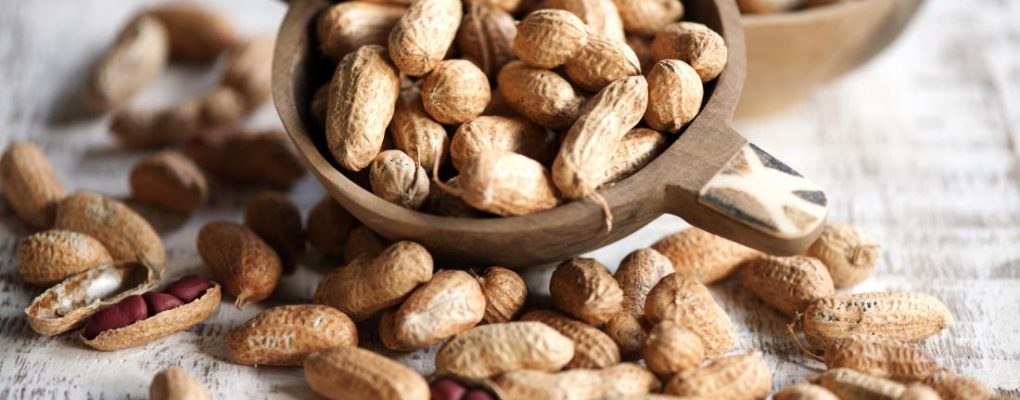
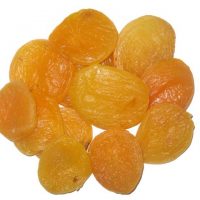
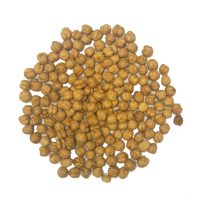
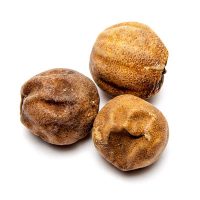
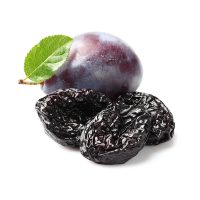
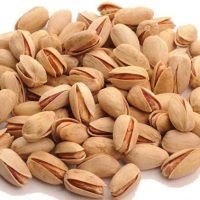
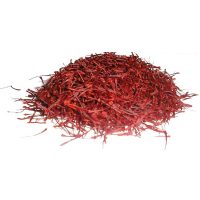
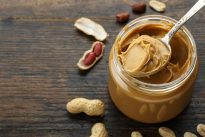
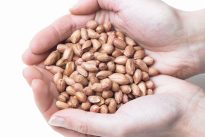
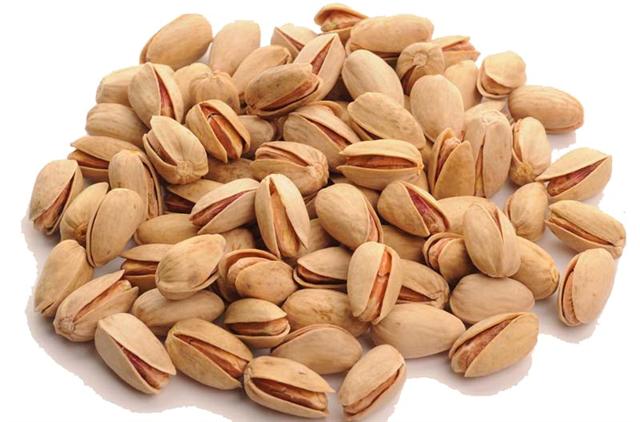
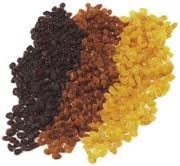 3 kind raisin
3 kind raisin 